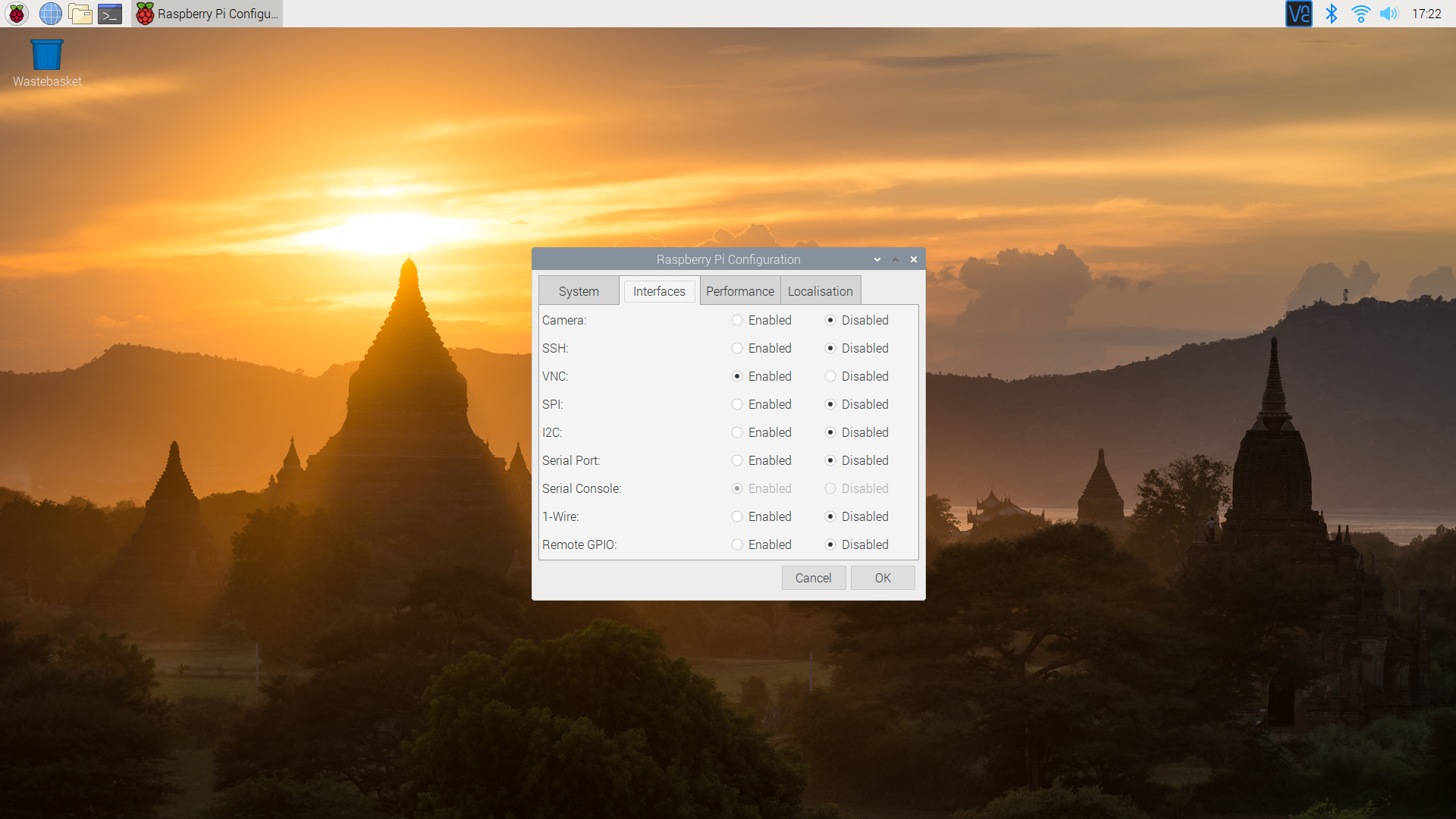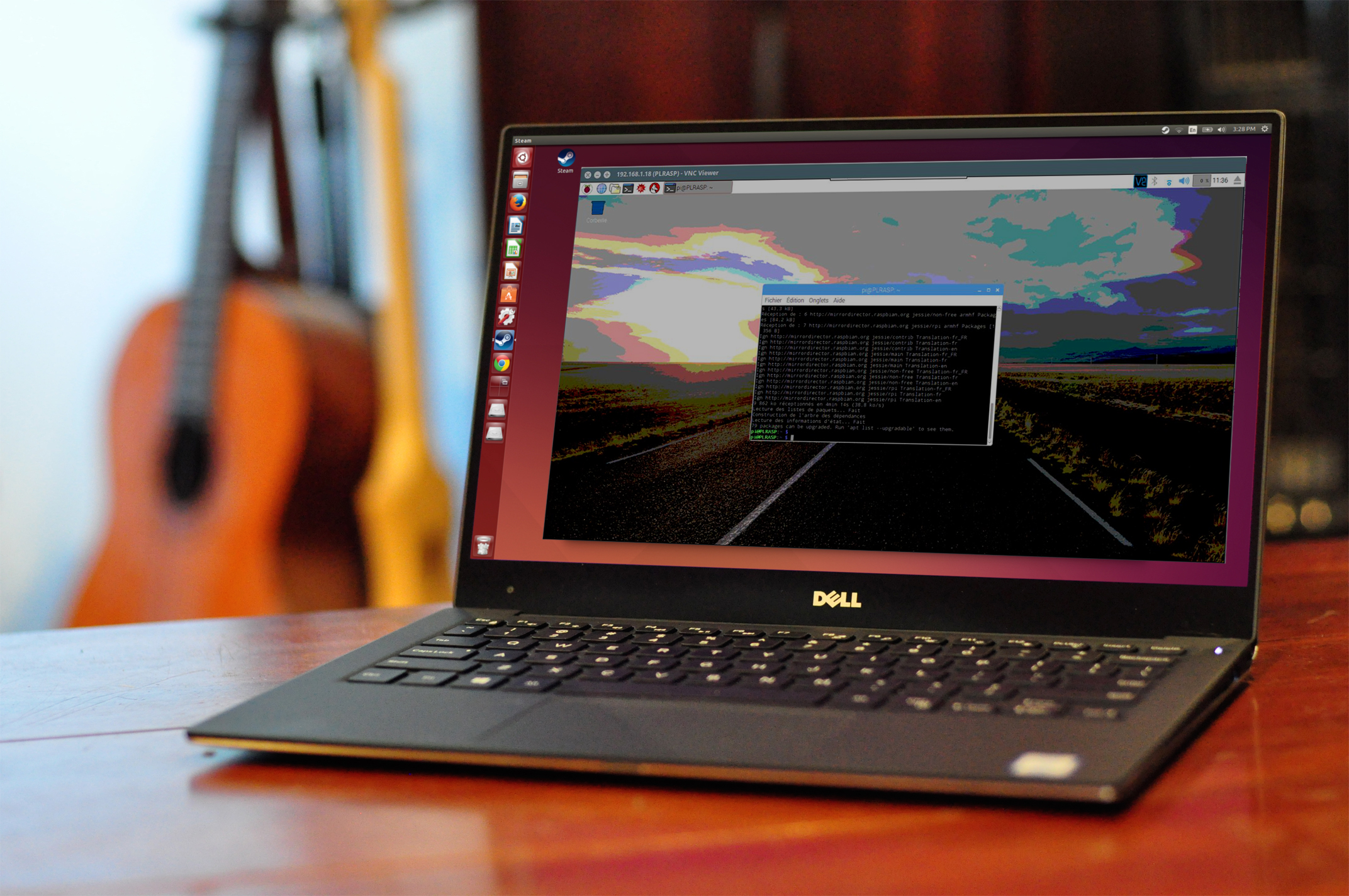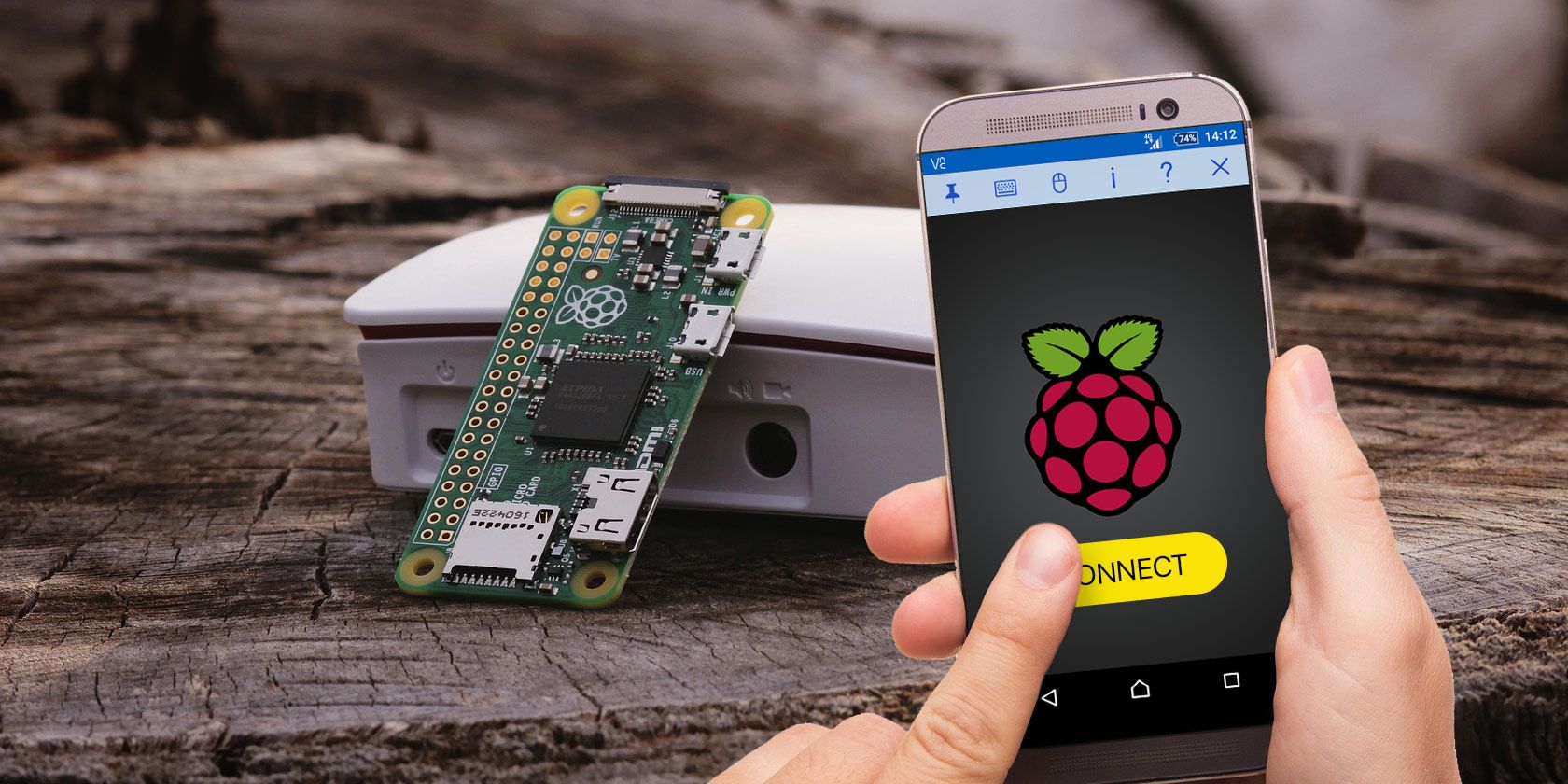Have you ever wished you could get to your little Raspberry Pi computer from anywhere, maybe even when you are far away from home? It is, actually, a common wish for many folks who use these small, but mighty, machines. Being able to check on things, run programs, or just tinker with your Pi without needing to be right next to it can be, you know, pretty useful. This idea of reaching your device over the big wide internet, without having to pay for special services, is something a lot of people are curious about.
Setting up your Raspberry Pi so you can see its screen and control it from another place, like your laptop at a coffee shop or your phone while you are out, is really what we are talking about here. It is about making your Pi available to you, no matter where you are physically located. This kind of connection lets you do things as if you were sitting right in front of it, which, for many, is a huge convenience. We will talk about how you can achieve this freedom with your Raspberry Pi, making it a truly remote companion.
The goal here is to give you some pointers on how to get this working for your Raspberry Pi, and to do it without spending any extra money on subscription services. We will go over the steps and considerations involved in making your Pi accessible from afar, focusing on free methods. It is about giving you the ability to manage your little computer whenever and wherever you might need to, which is, honestly, a pretty neat trick.
- How Old Is Meadow Soprano
- Bad Bunny Tickets Concert
- Jalen Hurts Relationship History
- What Temp Is A Well Done Steak
- Taylor Schilling Girlfriend
Table of Contents
- Getting Started with VNC on Your Raspberry Pi
- How Do You Set Up VNC Server for Raspberry Pi Over Internet Free Access?
- Connecting from Anywhere - Your VNC Raspberry Pi Over Internet Free Experience
- What Happens When You Need to Manage Many VNC Raspberry Pi Over Internet Free Connections?
- Troubleshooting Common Issues with VNC Raspberry Pi Over Internet Free Setup
- Can You Get Sound When Using VNC Raspberry Pi Over Internet Free?
- Display Settings and Performance for VNC Raspberry Pi Over Internet Free
- Keeping Your VNC Raspberry Pi Over Internet Free Connection Secure
Getting Started with VNC on Your Raspberry Pi
When you want to control your Raspberry Pi from a distance, VNC is a well-liked way to do it. It basically shows you your Pi's desktop on another device, so you can click around and type just as if you were there. To get going, you will need to make sure the VNC server software is on your Raspberry Pi. This software is what sends the picture of your Pi's screen to wherever you are connecting from. It is, you know, the first piece of the puzzle.
Many people find that getting the server part running is a straightforward process. You typically use some simple commands on your Pi to install it. Once it is there, you will want to make sure it starts up automatically whenever your Raspberry Pi turns on. This means you will not have to manually start it each time, which is, honestly, a real time-saver. Setting it up as a service means it just runs in the background, ready for you to connect.
A really important step right at the beginning is to put a strong password on your VNC server. This password is what keeps other people from just connecting to your Raspberry Pi without your say-so. It is, essentially, your first line of defense. Without a password, or with a weak one, anyone who finds your Pi on the network could, potentially, get in. So, picking a good, hard-to-guess password is, you know, absolutely necessary.
- Jeans New York City
- How Many Weeks Till Christmas
- Temperature Of A Steak Medium
- Medium Well Done
- Mia Z Viral Videos
How Do You Set Up VNC Server for Raspberry Pi Over Internet Free Access?
Setting up the VNC server on your Raspberry Pi for access over the internet, without cost, involves a few more steps beyond just installing the software. You will, for one thing, need to tell your home router to let VNC connections through to your Raspberry Pi. This is often called "port forwarding." It is like telling your router, "Hey, if someone tries to connect on this specific number, send them to my Raspberry Pi." Without this, the connection will, basically, get stuck at your router.
The exact steps for setting up port forwarding can differ a bit depending on what kind of router you have, but the general idea is the same. You will usually log into your router's settings page, find a section for port forwarding or virtual servers, and then put in the details for your Raspberry Pi. This includes the VNC port number, which is usually 5900 or 5901, and the specific address of your Raspberry Pi on your home network. It is, in a way, like giving your Pi its own special doorbell for the internet.
Another thing to think about for VNC Raspberry Pi over internet free access is that your home internet address might change sometimes. This is called a dynamic IP address. If your address changes, your connection might break because the outside world no longer knows where to find your Pi. To get around this, many people use a free service called Dynamic DNS, or DDNS. This service gives you a consistent name, like "my-pi-home.ddns.net," that always points to your current home internet address, even if it shifts. So, you know, it makes things much more reliable.
Connecting from Anywhere - Your VNC Raspberry Pi Over Internet Free Experience
Once your VNC server is running on your Raspberry Pi and your router is set up to let connections through, you are ready to connect from another device. This other device, often called a client, could be another computer, a tablet, or even your phone. There are, actually, many free VNC client applications available for all sorts of devices. For example, many people find that a good Android VNC client works really well for connecting to their Pi when they are out and about. It is, essentially, like having your Pi in your pocket.
When you use an Android VNC client, or any VNC client for that matter, you will put in the internet address you set up for your Raspberry Pi – either your home's public IP address or your DDNS name. Then, you will put in the password you created earlier. If everything is set up right, you should see your Raspberry Pi's desktop appear on your screen. This means you can now open programs, move files, and do whatever you need to do, just as if you were sitting right there. It is, basically, a pretty cool feeling.
Some clients are, you know, better than others in terms of how quickly they show you what is happening on your Pi's screen. A client that renders fast means less waiting around for the picture to update, which makes using your Pi from afar a much smoother experience. It is worth trying a few different client applications to see which one feels best for you and your devices. After all, the goal is to have a good, usable VNC Raspberry Pi over internet free connection, right?
What Happens When You Need to Manage Many VNC Raspberry Pi Over Internet Free Connections?
If you have more than one Raspberry Pi that you want to reach over the internet, managing all those connections can, in a way, get a little tricky. Each Pi will need its own VNC server running, and you will likely need to set up port forwarding for each one, using a different port number for each Pi. For example, one Pi might use port 5901, another 5902, and so on. This helps your router know which Pi you want to talk to when a connection comes in from the internet. It is, pretty much, like having different phone extensions for each Pi.
Some folks who deal with many remote connections like to keep their connection details organized. They might save the connection settings for each Raspberry Pi in separate files, often with a ".vnc" ending. This way, instead of typing in the address and port every time, they can just open the saved file, and the VNC client will, more or less, know where to go. This makes getting to each of your different Raspberry Pis much quicker and easier, which is, honestly, a big help when you have several devices.
There are, actually, tools out there that help you keep track of multiple VNC connections. These tools can give you a central place to see all your saved Pi connections and launch them with just a click. While the original text mentions a specific enterprise tool, for personal use with your VNC Raspberry Pi over internet free setup, simply keeping your .vnc files organized or using a client that has a good connection list feature can work wonders. It is, truly, about finding a system that fits how you like to work.
Troubleshooting Common Issues with VNC Raspberry Pi Over Internet Free Setup
Even with the best planning, you might run into a few bumps when setting up your VNC Raspberry Pi over internet free connection. One common message people see is about a server not having a valid password. This usually means that the VNC server on your Raspberry Pi has not had a password set, or perhaps it was set incorrectly. The VNC server needs that password to let anyone in, so if it is missing, incoming connections will, basically, be stopped right away. You will need to go back to your Pi and make sure that password is in place.
Another issue people sometimes face is when the screen on their VNC client does not seem to update properly, especially if the software on the Raspberry Pi is changing things very quickly. This can happen if the VNC connection is not keeping up with the speed of the changes on the Pi's screen. It might look like the picture is frozen or only updates every few seconds. This can be, you know, a bit frustrating. Sometimes, using a different VNC client, or adjusting the quality settings on the client side, can help with this. It is, in a way, about finding the right balance for your connection.
Occasionally, you might also find that your VNC connection shows full color, even if you set it to use fewer colors in your VNC configuration file. This can be a little confusing, as you expect your settings to take effect. Sometimes, this might happen with newer versions of the VNC server software, or perhaps the client is overriding the server's preference. If you have an older version of the VNC server software that works better for your specific needs, you might, honestly, consider using that. It is, basically, about finding what works best for your particular setup and goals for VNC Raspberry Pi over internet free access.
Can You Get Sound When Using VNC Raspberry Pi Over Internet Free?
A question that comes up pretty often when people use VNC is whether they can hear sound from their Raspberry Pi through the VNC connection. Most standard VNC setups are, you know, primarily designed to show you the screen and let you control the mouse and keyboard. They do not typically send audio along with the video. So, if you are hoping to listen to music or hear system sounds from your Raspberry Pi while connected via VNC, you might find that it is not directly supported by the usual free VNC tools.
For many, having sound is a really important feature, especially if they are using their Raspberry Pi for media or applications that rely on audio feedback. While some paid VNC solutions do offer sound support, it is generally not a feature you will find in the free VNC server and client options for your VNC Raspberry Pi over internet free setup. This is, essentially, a limitation of how VNC was originally put together. It was, more or less, built for visual control, not for audio streaming.
If sound is an absolute must-have for your remote Raspberry Pi experience, you might need to look into other ways to get audio, separate from your VNC connection. This could involve setting up a different kind of streaming service for audio, or using a separate program that specifically handles sound over the network. It is, truly, an added layer of complexity if audio is a requirement, as VNC itself usually does not handle it. So, you know, it is something to keep in mind if sound is important to you.
Display Settings and Performance for VNC Raspberry Pi Over Internet Free
The way your VNC connection looks and feels can be greatly affected by the display settings you choose. For instance, the number of colors your VNC connection uses can make a big difference. If you set your VNC server to use fewer colors, like 8 colors instead of full color, the amount of information that needs to be sent over the internet is much smaller. This can, in a way, make your connection feel faster and more responsive, especially if your internet connection is not super quick. It is, basically, a trade-off between visual quality and speed.
Sometimes, people find that even when they try to set their VNC server to use fewer colors, the connection still shows full color when they first connect. This can be a bit puzzling. It might be that the VNC client you are using is requesting a higher color depth, or there might be a default setting that overrides your specific configuration file. It is, honestly, worth checking both the server settings on your Raspberry Pi and the client settings on the device you are connecting from to make sure they are aligned. Sometimes, a slight change in either can fix this.
Performance is, really, a key part of having a good VNC Raspberry Pi over internet free experience. Beyond color depth, other factors like the resolution of your Pi's desktop and how often the screen updates can also affect how smooth your connection feels. A lower resolution means less data to send, which can also speed things up. It is, essentially, about finding the sweet spot where the picture quality is good enough for your needs, but the connection remains quick and responsive. You know, it is all about balancing those elements.
Keeping Your VNC Raspberry Pi Over Internet Free Connection Secure
Security is, you know, a very important part of setting up your VNC Raspberry Pi over internet free access. When you open up your Raspberry Pi to the internet, you are, essentially, creating a doorway for anyone to try and get in. That is why the password you set for your VNC server is so incredibly important. Make sure it is a strong one, with a mix of different types of characters, and not something easy to guess. A weak password is, basically, like leaving your front door wide open.
Beyond just the VNC password, there are other steps you can take to make your connection more secure. Using a Virtual Private Network, or VPN, is a highly recommended way to add an extra layer of protection. If you set up a VPN server on your home network (which your Raspberry Pi can even do!), you would first connect to your home VPN, and then connect to your VNC server. This means your VNC traffic is, essentially, traveling inside a secure, encrypted tunnel, making it much harder for others to snoop on your connection. It is, truly, a significant step up in safety.
Regularly updating the software on your Raspberry Pi, including the VNC server, is also a good habit to get into. Software updates often include fixes for security weaknesses that have been found. By keeping everything up to date, you are helping to make sure your VNC Raspberry Pi over internet free setup is as protected as it can be from known issues. It is, honestly, a simple but effective way to maintain a good level of security for your remote access.
This article has gone over how to set up VNC on your Raspberry Pi for free internet access, starting with getting the VNC server installed and setting a strong password. We discussed the steps for making your Pi reachable from outside your home network, like port forwarding and using Dynamic DNS services. We also covered connecting from various devices, including Android phones, and how to manage multiple Raspberry Pi connections. Common issues such as password problems, screen refresh difficulties, and color settings were addressed. Finally, the article touched upon the current limitations regarding sound support in free VNC setups and highlighted the critical importance of security measures like strong passwords and VPNs for your remote access.
Related Resources:



Detail Author:
- Name : Vito Brekke
- Username : jbreitenberg
- Email : clementine45@hotmail.com
- Birthdate : 1990-12-14
- Address : 447 Jenifer Prairie Suite 907 South Lurlinebury, SC 03259-2631
- Phone : +1.513.359.0664
- Company : Marquardt, Labadie and Hane
- Job : Gaming Cage Worker
- Bio : Quo sed nesciunt vitae accusamus. Velit ullam dolorem blanditiis maiores omnis dolor voluptatum. Voluptatem illo natus ipsum. Nobis ratione vero eveniet omnis et recusandae aperiam.
Socials
facebook:
- url : https://facebook.com/lenore5355
- username : lenore5355
- bio : Quis qui odit veniam est. Impedit velit voluptas repudiandae.
- followers : 5745
- following : 997
linkedin:
- url : https://linkedin.com/in/breitenberg1977
- username : breitenberg1977
- bio : Eius unde doloremque aut labore est.
- followers : 6203
- following : 2117